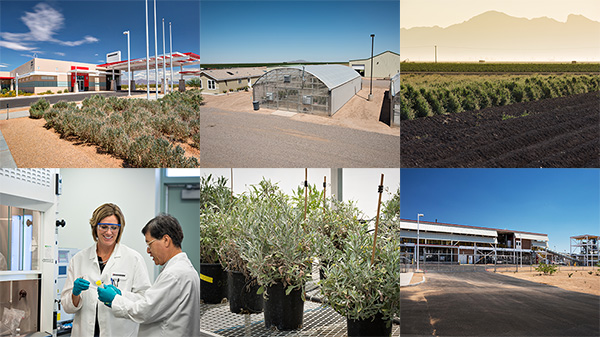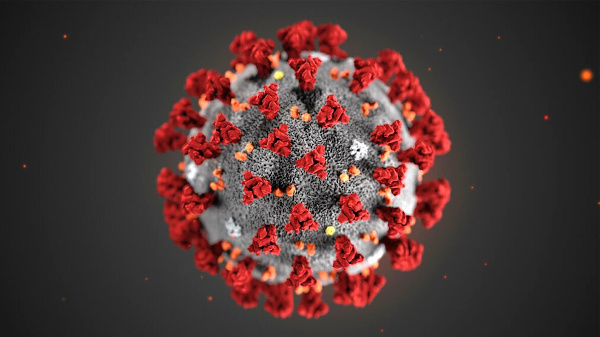Will Guayule Rubber Be A Boom Or Bust For Arizona?
After More Than A Century, The Desert Shrub May Soon Be Ready To Contribute Its Rubber To Automobile Tires And Possibly Other Applications With Arizona As The Nexus

Graphic by Modern Times Magazine.
By Joey Hancock and Ryan Scott
Published on Aug. 26, 2015
Page 2 of 3
“Southeast Asia makes 90 plus percent of the world’s natural rubber and those regions are moving up the development ladder and are no longer third-world type of areas and that changes how land is valued and how labor is valued,” he said. “This drives up the costs of Hevea and we do believe in the future, with a combination of what is happening with Hevea and application technology to produce guayule rubber, it has the ability to be cost competitive.”
The long term goal of Bridgestone is to have rubber originating from different areas from different plants, so guayule isn’t a replacement for the rubber produced from the Hevea tree. It would be a replacement in how it is used but in the very distant future Bridgestone is looking at both plants as sources they would rely on for the rubber used in tires.
The Acetone Factor
The process for extracting rubber from the two plants is vastly different. The Hevea tree is tapped, much like a maple tree for syrup, and the guayule plant is processed using a solvent based process with chemicals such as acetone.
“We use a solvent based process and at a high level is very similar to what is done in processing soybean or corn oil,” Niaura said. “Obviously, they are extracting oils and we extract the rubber and the solvent based process gives us advantages in controlling the product quality and tailor it to tire grade rubber, as opposed to more general rubber needs, whether that is gloves, shoes or some other products. Tires are a fairly technical product and to produce the quality level of rubber the extraction process allows us to get there.”
A water based process is also capable of extracting the rubber from the plant but has been found to not be capable of producing the quality of rubber necessary for tire manufacturing.
Environmental issues and worker safety using these chemicals is a concern for Bridgestone and the company is taking precautions from hazardous materials from entering the environment or harming its workers.
“Industry practices, in terms of chemical facilities, we are subject to OSHA regulations, we are subject to EPA regulations in terms of emissions, so the process is tailored to extracting the rubber but from an industry standpoint it is a fairly standard chemical operation,” Niaura said. “It is well known within the industry how to implement the best practices, both to make the processes work the best they can and to protect the workers and the environment and unless you’re in the industry it isn’t always clear where products come from but corn oil or soybean oil are produced through hydrocarbon solvent methods, decaffeinated coffee is decaffeinated through solvent methods and the list goes on.”
The Bridgestone Process Research Center located in Mesa is listed as a small quantity generator of hazardous waste, according to the Arizona Department of Environmental Equality. Per the Code of Federal Regulations, Bridgestone must follow item 40 part 262, which pertains to protection of the environment.
According to documents provided by the ADEQ, Bridgestone submitted a request to change their status from a conditionally exempt small quantity generator to a small quantity generator in April of 2015.
There are very specific requirements the plant must meet in terms of transportation, record keeping, exporting and importing according to the Code of Federal Regulations.
Another process which has been phased out over the years due to economic reasons and ease of use is a process that uses only water.
“The basic process is a water process that you can separate out the rubber and that is what was done in Mexico at the turn of the century because they didn’t have access to the chemicals,” Ray said. “It can be done more efficiently with chemicals but that has other potential problems but it can also be recycled.”
Concerns with the chemical based extraction process have been raised in the past, specifically concerning the health of the workers who handle the solvents throughout the process, most notably in a peer-reviewed study researched by a handful of university professors.
“Unfortunately, existing methods for processing and extracting the plant tissue and for analysis of the extracted material are extremely time-consuming, thus limiting the number of samples that can be screened. In addition, the extraction methods require considerable handling of organic solvents, subjecting workers to organic solvents that are potentially dangerous to their health,” read an excerpt from the 1991 study, Guayule Natural Rubber Commercialization: A Scale-Up Feasibility Study.
Better Rubber Through Better Breeding
Bridgestone has an agricultural team working on increasing productivity and yield through breeding and they are developing methods in proprietary varieties much like other companies are doing with corn and other commercialized plants.
“As with corn and other products, you will have multiple varieties available to growers to choose from and they will select seed based on cost and performance in their area,” Niaura said. “Breeding plants and creating plants that are suitable is the way it works and I think it is great other people are playing there and it just adds diversity and a chance of success and a chance for the agricultural community to create a new crop.”
Bridgestone is working with independent producers and are developing the skill set needed to provide a viable guayule seed for commercialization and the end game expected is that guayule would become much like other Arizona products, like cotton and alfalfa, and farmers would be able to grow guayule and make a profit.
Most Popular

About Us
Login
Contact Us
Subscribe
Advertise With Us
Copyright 2010 to 2020 Modern Times Magazine and Modern Communications. All Rights Reserved.
Terms of Service
Privacy Policy

Login
About Us
Contact Us
Subscribe
Advertise With Us
Copyright 2010 to 2020 Modern Times Magazine and Modern Communications. All Rights Reserved.




